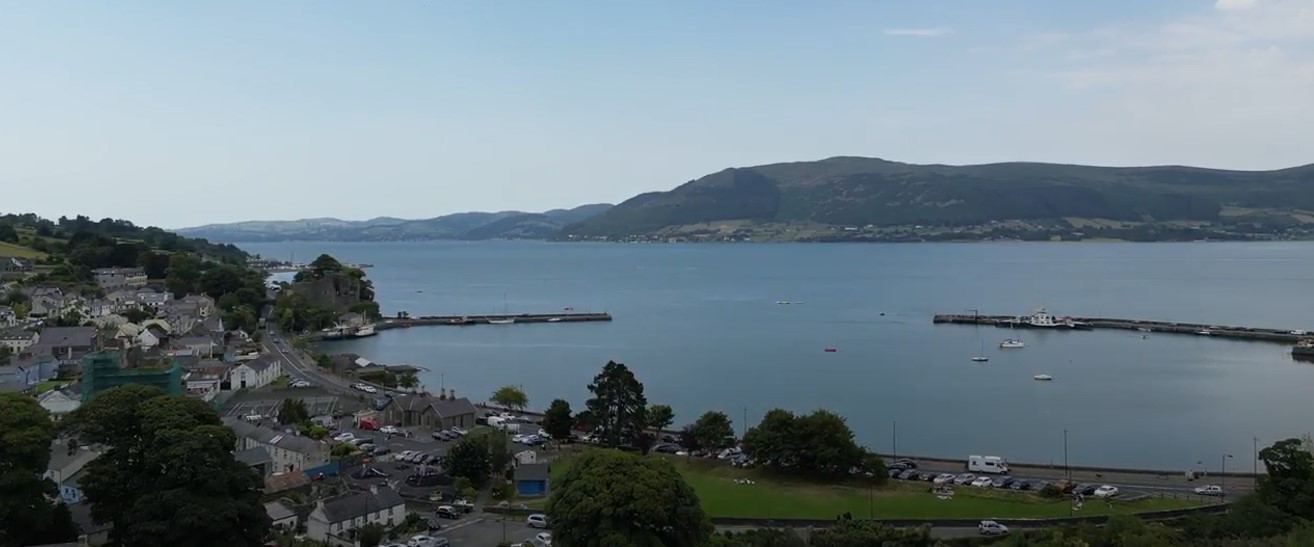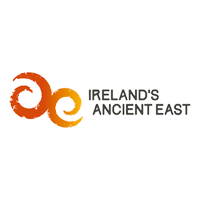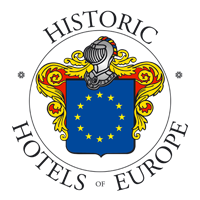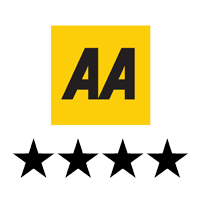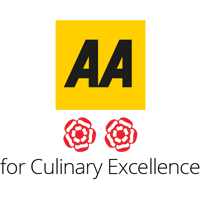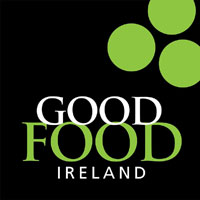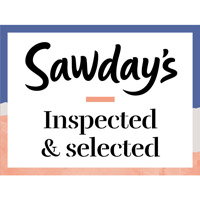Carlingford is far more than a charming historic town on the shores of Carlingford Lough. Located just 1 hour from Dublin & Belfast airports, it holds a captivating real and alive tapestry of history and heritage.
Join us on a journey through Carlingford’s remarkable heritage sites, from majestic castles to sacred churches. Carlingford has a fascinating and unique history and there is good reason why visitors from all over the world come to stay & explore!
Carlingford Castle: An emblem of medieval power
Carlingford Castle was built in the 12th century by Hugh de Lacy and visited by Joe Biden on his presidential visit to Ireland in 2023! It sits proudly atop a rock outcrop standing guard to all that sailed before her in ancient times!
The castle’s thick stone walls offer a glimpse into its historical significance. Great, informative guided tours are available from the Tourist Office in Carlingford most days – explore the remains of Carlingford Castle and revel in the panoramic views of Carlingford Lough, the Mountains of Mourne & Slieve Foy mountain towering above the castle!
Taaffe’s Castle: A glimpse into the lives of the elite
Taaffe’s Castle which dates from 1450, is a well-preserved medieval tower house named after the influential Taaffe family. It is a fine example of a fortified townhouse. Now it forms part of pub of the same name.
Holy Trinity Heritage Centre: immersive insights into Carlingford’s past
Immerse yourself in Carlingford’s past at the Holy Trinity Heritage Centre (just behind Ghan House) which dates from the 17th Century and is located just a treelength from Ghan House. The centre brings history to life the story of Carlingford through the ages in a captivating exhibition featuring archaeological artifacts, historical photographs, and engaging displays.
Again, join the Heritage Centre trained guides for an informative walking tour of the town. https://carlingfordheritagecentre.com/tours/ or local native Clodagh on https://anamtours.ie/
Tholsel: gateway to Carlingford’s medieval era
There are very few remaining medieval city gates in Ireland, making The Tholsel (built 1450) here in Carlingford of great importance. It is just a stone’s throw from the castellated walls (approx. 1700) of Ghan House.
It was built to monitor the passage into and out of the town, provide a gaol and was a meeting place for the town council.
Nowadays it stands testament to Carlingford’s ancient past and serves as a gateway leading into Carlingford on a beautiful pedestrianised street which boasts an ancient mint, cafes, shops and pub!
A great scene setter to explore the town’s many attractions!
Carlingford Friary: tranquillity amidst the greenery
The Friary can seen from most of the bedrooms at Ghan House & is indeed just a stone’s throw away.
Immerse yourself in the tranquillity of Carlingford Friary, a well-preserved 14th-century monastery nestled amidst lush greenery. The guided tours of Carlingford (see above) are available for those seeking a deeper understanding of the friary’s history and significance.
Carlingford Town Wall: remnants of medieval defence
The town walls of Carlingford were built in the 13th century and these fortifications represented the town’s strategic importance during times of conflict. Nowadays there is just a small section remaining – behind some houses – seek & you won’t find! The guided tour of Carlingford will lead you to it!
Carlingford Lough: nature’s masterpiece
While not a heritage site in the traditional sense, Carlingford Lough is an integral part of the town’s identity and history. One of only 2 Fjords in Ireland, nestled between the Mourne Mountains and the Cooley Peninsula, the whole of The Carlingford Lough area offers breathtaking views and a myriad of outdoor activities.
Whether you explore the lough by boat, try your hand at fishing, or simply immerse yourself in its natural beauty, Carlingford Lough is a true masterpiece.
Ghan House: nearly 300 years of history brought right up to date with 4* bedrooms & 2AA Rosette restaurant – a great play to stay and to see all of the aforementioned from its’ windows!
Ghan House is an eighteenth-century Georgian house built in 1727 by William Stannus, a politician from Dublin who was of Scottish descent.
The drawing room in the main house is an extension to the original property. Built in approximately 1747, you can see from outside the differently sized windows. Also outside, just 20yds from the front door, is a hollow just before the pond. This was discovered 32 years ago when excavating the pond. Archaeologists think that it is an ancient private bathing area. There is a tunnel linking this to the other lawn, probably to bring in the seawater.
There are 2 busts on the ceiling of the drawing room, apparently of William Stannus’ daughters – however we have been told that he only had one daughter, so who the other lady is….we can only guess!
An interesting visitor to Ghan House was Dame Ninette de Valois, whose father was Thomas Stannus, grandson of William. Dame Ninette de Valois OM CH DBE (born Edris Stannus; 6 June 1898 – 8 March 2001) was an Irish-born dancer, teacher, choreographer and director of classical ballet. Most notably, she danced professionally with Serge Diaghilev’s Ballets Russes, later establishing the Royal Ballet, one of the foremost ballet companies of the 20th century and one of the leading ballet companies in the world. She also established the Royal Ballet School and the touring company which became the Birmingham Royal Ballet. She is widely regarded as one of the most influential figures in the history of ballet and as the “godmother” of English and Irish ballet.
I’m sure she used the ballroom where breakfast is usually served!
Staying at the Georgian Ghan House in Medieval Carlingford, you can embark on this captivating journey through Carlingford’s heritage and delve into its’ remarkable past. From medieval castles to serene churches, each heritage site holds tales of a bygone era.
